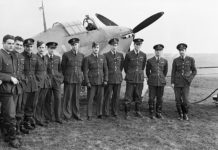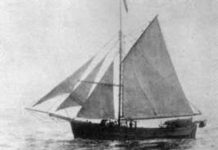Battling against the British Empire, the Boers of South Africa refused to live under the rule of the British Imperial government. The Boers were the descendents of Dutch settlers who immigrated to the African territory to farm the land. British citizens were encouraged to settle in the new colony and they did not get along with the Boers. Initially, the British respected the two territories occupied by the Dutch, the Orange Free State and the Transvaal, but the Imperial government changed its mind. Against the wishes of the Boers, the British annexed the Transvaal region in 1877. War was inevitable.
The Second Boer War
The first Boer War broke out in 1880. The British were defeated a year later and the Transvaal was made independent again. The peace was not to last. Gold was discovered in the Transvaal and the Orange Free State in 1886; the regions were also rich in diamonds found in 1877. The Boer population was too small to operate the mines adequately, so immigrants flooded into South Africa to work. Many of the avid migrants were British and gradually the Boers became the minority. War broke out again in 1899 between the British and the two Boer states.
The conflict was expected to be short, the British at that time considered the most powerful force in the world. “Pro-Empire Canadians nevertheless urged their government to help,” said the Canadian War Museum in “Canada and the South African War”. The struggle was for “British freedom, justice, and civilization against Boer backwardness.” French Canadians and new non-British immigrants in Canada saw no point in entering the overseas war.
Canadian Volunteer Battalion Joined British Troops
Prime Minister Sir Wilfrid Laurier did not want Canada to participate in overseas conflicts either. Rarely had Canadians served in overseas battles. Rather than ordering soldiers into battle, he permitted a battalion of volunteer soldiers to set sail for South Africa. The Canadian regiment arrived in November 1899, ready and able to take part in battle.
As Boer General Piet Cronje lead his troops along the Modder River banks, they were intercepted by the British forces in mid-February, 1900. “Among the attacking forces were 31 officers and 866 other ranks of the 2nd (Special Services) Battalion, Royal Canadian Regiment of Infantry,” according to the Canadian War Museum. The Canadians were under the command of Lieutenant-Colonel W.D. Otter and attached to Lieutenant-General Thomas Kelly-Kennedy’s 6th and 9th Divisions. “This,” added the Canadian War Museum, “was the first major Canadian action of the South African War.”
2nd (Special Services) Battalion, RCR Infantry in an Appalling Battle
The first day of battle for Canadians was disastrous. Sloshing through chest-deep water, the troops crossed the rushing Modder River. The men obvious in open view, Boer snipers took aim and hit their helpless targets, slaughtering the British and Canadians as they scrambled to climb the riverbank. Help was on its way. The Duke of Cornwall’s Light Infantry, a British reserve battalion, arrived in the late afternoon. Lieutenant-Colonel William Aldworth ordered a bayonet charge on the Boer installations, but gained only 300 yards of territory. Of the Canadians, sixty men were wounded and 18 were killed in the grisly fight on Sunday, February 18th. Three more died later of their wounds.
Aiding the British in encounters for the next week, the Canadians were horrified by the gruesomeness of battle. The Boers tossed dead humans and horses into the Modder river, “and the Boers were dumping their wastes in as well,” said Battle Honours of the Royal Canadian Regiment: “Paardeberg”. The river was the drinking source for the soldiers, and “later 350 men came down with enteric fever.”
The Boers were not the only side acting with extreme viciousness. The British set Boer homes ablaze, destroyed their farms and “moved civilians into internment camps, where thousands died from disease,” stated the Canadian War Museum, adding, “This harsh strategy eventually defeated the Boers.”
Surrender of the Boers at Paardeberg
In the dark morning hours of February 27, 1900, the Canadians were back on the battlefront, surreptitiously inching toward Boer positions. Approximately 200 yards from the enemy, the RCR soldiers were blasted by rifle attack, killing six and wounding 21. The men continued on, reaching the close range of 100 yards. Hearing a call to withdraw, part of the RCRs retreated to the original line. The Companies “G: and “H” with volunteers from the Maritimes remained and by early morning were close enough to frighten the Boers into claiming surrender. At 6 a.m., “a Boer with a white flag stood up and announced that all resistance was over,” said Battle Honours of the Royal Canadian Regiment. Four thousand Boers, almost 10 percent of the Boer army, surrendered in the morning.
The ghastly Battle of Paardeberg Drift was over, ten grisly days from start to finish. The 2nd (Special Services) Battalion, Royal Canadian Regiment left South Africa for Canada on October 1, 1900. The South African War did not end until 1902. During those three years, 7,000 Canadians served in the Second Boer War, and 267 lost their lives. One hundred and eleven years later, their solemn sacrifice is still remembered in the “South African War/Nile Book of Remembrance” in the Peace Tower on Parliament Hill.
Sources:
- “Canada and the South African War,” Canadian War Museum
- Battle Honours of the Royal Canadian Regiment: “Paardeberg”
- Chaplin-Thomas, Charmion, “Fourth Dimension,” The Maple Leaf Vol. 10, No. 5, February 15, 1900, Department of National Defence and Canadian Forces






